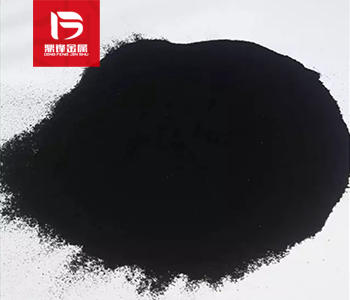
Palladium(II) Iodide Recycling
Palladium(II) iodide is a versatile palladium catalyst with a black floc appearance, known for its applications across various industries including pharmaceuticals, laboratories, petroleum, food, new energy, and military. Its role as a catalyst is crucial for speeding up reactions, such as drug synthesis, enzyme reactions, and fuel cell processes.
- Parameter
- Related Questions and Answers
-
Name : Palladium(II) Iodide
-
Use : Silver iodide
-
Application Areas : Medical, solar energy, electronic manufacturing and semiconductor industries, etc.
-
Appearance and properties : White solid powder
-
Settlement Method : On-site payment
-
Recycling Type : Palladium recycling
-
Door-to-door recycling:worldwide
-
Customer service: Free content testing and door-to-door recycling
Palladium Alloy Recycling
Palladium alloy is a secondary alloy composed of palladium as the base material and other metal elements. The palladium alloy is mainly used for the purification of hydrogen. After the hydrogen is purified by the palladium alloy, the purity can reach more than 9 nines. The main alloy systems of palladium alloys are: palladium-gold alloy, palladium-silver alloy, and palladium-iridium alloy. Waste palladium alloy is one of the sources of palladium waste recycling. The sources of palladium waste recycling include palladium gold recycling, palladium wire recycling, palladium particle recycling, palladium tube recycling, palladium ingot recycling, colloidal palladium recycling, etc.
Search : Palladium Alloy RecyclingPalladium Acetate Recycling
Palladium acetate, also known as Palladium(II) acetate, is an organic acid salt compound of palladium, with the chemical formula Pd (CH3COO) 2. It is a colorless crystal that takes on a solid form at room temperature. Palladium acetate is soluble in organic solvents such as alcohols and ethers, but its solubility in water is relatively low., also known as Palladium(II) acetate, is an organic acid salt compound of palladium, with the chemical formula Pd (CH3COO) 2. It is a colorless crystal that takes on a solid form at room temperature. Palladium acetate is soluble in organic solvents such as alcohols and ethers, but its solubility in water is relatively low.
Search : Palladium Acetate RecyclingPalladium Wire Recycling
Palladium wire is a filamentous material made of high-purity palladium (such as palladium wire), which is widely used in industrial production due to its excellent physical properties and corrosion resistance.
Search : Palladium Wire RecyclingPalladium Sulfate Recycling
Palladium sulfate is a reddish brown palladium catalyst mainly used in electroplating and catalyst fields, as well as analytical reagents. Palladium sulfate has good catalytic activity and is generally used as a reagent, such as a debenzylation reagent. It is also a raw material for synthesizing and producing various palladium containing compounds and catalysts. A compound synthesized with palladium sulfate.
Search : Palladium Sulfate RecyclingProduct Details
Palladium(II) iodide is a versatile palladium catalyst with a black floc appearance, known for its applications across various industries including pharmaceuticals, laboratories, petroleum, food, new energy, and military. Its role as a catalyst is crucial for speeding up reactions, such as drug synthesis, enzyme reactions, and fuel cell processes.
Key Aspects:
Chemical Properties: Insoluble in water and hydrochloric acid but soluble in excess iodide ions, forming a red solution. This solubility is due to the common ion effect, which increases solubility when additional iodide ions are present.
Precipitation Process: Adding KI or HI to a chloropalladium acid solution results in the precipitation of black flocs. This process aids in concentrating palladium ions, making them easier to recover through filtration and drying.
Applications:
Pharmaceuticals: Used in synthetic reactions, aiding in drug synthesis and enzyme reactions.
Chemical Laboratories: Facilitates various laboratory reactions requiring efficient catalysts.
Energy: Potential use in fuel cells and energy conversion devices.
Military: May be used in sensors or components where stable catalysts are beneficial.
Recovery Methods: The factory specializes in recovering palladium from various compounds, emphasizing direct partnerships to ensure cost-effectiveness and security.
Recycling Importance: Efficient recovery is vital for sustainability, reducing waste and environmental impact. The company's focus on direct suppliers enhances this process.
In summary, Palladium(II) iodide is a valuable catalyst with wide-ranging applications, and effective recycling methods are essential for its sustainable use. Dingfeng Precious Metal Recycling and Refining Factory provides reliable solutions, ensuring customer privacy and security during the recycling process.

